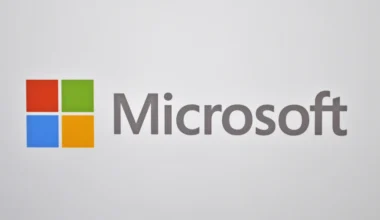Introduction:
The security of operating systems is critical in the ever-changing field of mobile technology. We need to safeguard our smartphones from any risks as our reliance on them increases. One critical facet of this security endeavor involves shielding Android, the world’s most widely used mobile operating system, against vulnerabilities in its cellular baseband.
Recent developments showcase Google’s proactive stance in bolstering Android’s defenses against potential exploits targeting cellular baseband vulnerabilities. Google has embraced Clang sanitizers, a powerful set of tools designed to identify and rectify a wide range of programming errors. In this comprehensive blog, we delve into the intricacies of cellular baseband vulnerabilities, the significance of Clang sanitizers, and the strategic steps Google has taken to secure Android.
Understanding Cellular Baseband Vulnerabilities:
The cellular baseband is a pivotal component within a mobile device, managing communication with cellular networks. Responsible for voice calls, text messages, and data connections, the baseband processor is a critical linchpin of mobile functionality. However, vulnerabilities within this component can expose devices to severe threats, ranging from unauthorized access to sensitive data to complete compromise of the device’s control.
Google’s Strategic Move: Integrating Clang Sanitizers
Google’s adoption of Clang sanitizers represents a robust strategy to fortify Android against potential vulnerabilities from the ground up. The programming languages C, C++, and Objective-C are supported via the flexible compiler front end Clang. The Clang sanitizers consist of four different types: AddressSanitizer, MemorySanitizer, UndefinedBehaviorSanitizer, and ThreadSanitizer.
AddressSanitizer and MemorySanitizer for Memory Safety:
These products are essential for detecting and addressing memory-related problems. The likelihood of exploitation is decreased when memory safety flaws like buffer overflows and use-after-free are found early in the development process.
Ensuring Data Integrity with Undefined Behavior Sanitizer:
Undefined behavior in code can lead to unpredictable outcomes and security risks. Undefined Behavior Sanitizer helps pinpoint and rectify such issues, promoting data integrity and preventing potential security breaches.
Concurrency Bug Detection with ThreadSanitizer:
The cellular baseband often involves concurrent execution of tasks. Thread Sanitizer is an essential tool for finding and fixing concurrency-related issues such as data races, which improves the code’s overall security and dependability.
Proactive Bug Identification for Faster Remediation:
By integrating Clang sanitizers into the Android build process, Google empowers developers to identify and address potential vulnerabilities early in the development cycle. This proactive approach ensures that security concerns are mitigated before the final release, minimizing the likelihood of deploying insecure code.

Conclusion:
Smartphone security is a shared duty by device makers, developers, and the general public as these gadgets become more and more ingrained in our daily lives. Google’s decision to integrate Clang sanitizers into the Android development process represents a commendable step towards fortifying the platform against cellular baseband vulnerabilities.
This calculated action not only establishes a good standard for the industry but also demonstrates Google’s dedication to user security. The statement emphasizes the significance of utilizing sophisticated instruments and techniques to improve the security stance of mobile operating systems. In order to keep ahead of new threats and guarantee the continued security of mobile platforms like Android, cooperation between industry leaders and the open-source community will be essential as technology advances.
In the ever-changing landscape of cybersecurity, Google’s proactive use of Clang sanitizers serves as a beacon, guiding the industry towards a future where mobile devices are resilient against the ever-present challenges posed by malicious actors. As we navigate this intricate terrain, the fusion of cutting-edge technology and collaborative efforts will be key to fortifying the digital realm we inhabit.








5 comments
Technologies for life which are necessary to use every day! search on] world map free you can use usa-map.online] site.
satellite] Afghanistan, Albania, Bangladesh, Bosnia and Herzegovina, Estonia, Dominica or Dominican Republic, Germany map every city street] up-to-date data level of technology. location on] map of Barbados, Angola, Jamaica, rich in traditions Mongolia or wonderful South Africa, Cambodia, Namibia or Uganda, city or wild places].
Dynamically developing view] of map of United Arab Emirates, Oman, South Korea and satellite photo] 24/7 online.
For travelers it’s convenient and reliable search address and location] on a map of Nepal, Georgia, Italy, Egypt, Japan, New Zealand, Vatican, Vietnam scheme].
satellite] covers vast expanses on United States of America, Canada or Russia map on] all continents. Use this map right now.
Satellite Map of Wisconsin
I do trust all the ideas youve presented in your post They are really convincing and will definitely work Nonetheless the posts are too short for newbies May just you please lengthen them a bit from next time Thank you for the post
Hello i think that i saw you visited my weblog so i came to Return the favore Im trying to find things to improve my web siteI suppose its ok to use some of your ideas
you are truly a just right webmaster The site loading speed is incredible It kind of feels that youre doing any distinctive trick In addition The contents are masterwork you have done a great activity in this matter
Thank you for the auspicious writeup It in fact was a amusement account it Look advanced to far added agreeable from you However how can we communicate